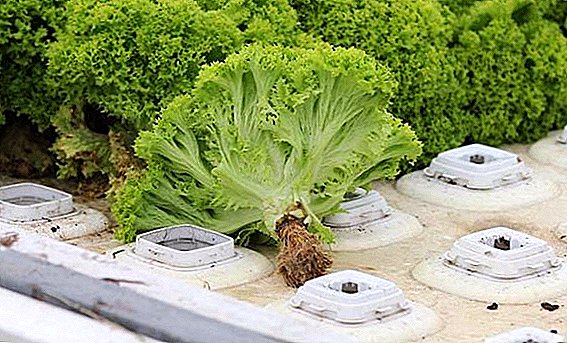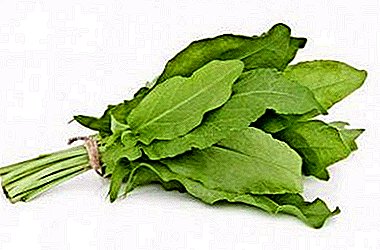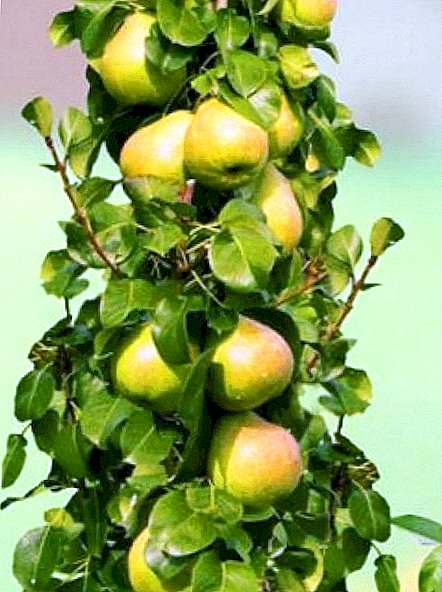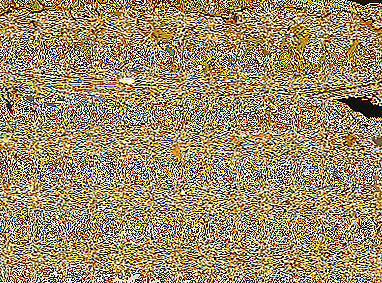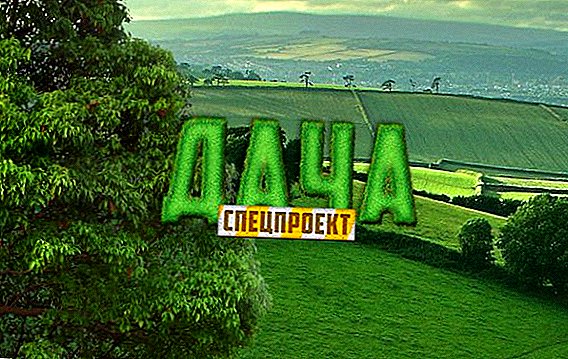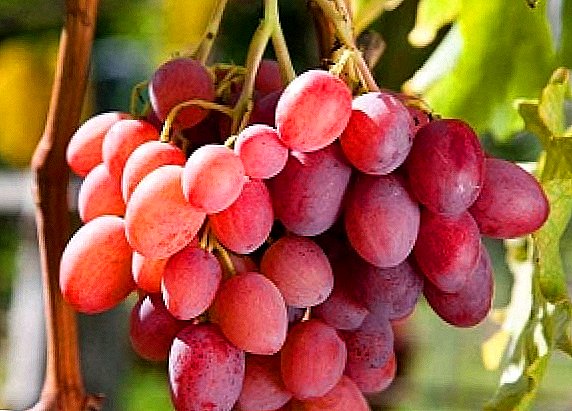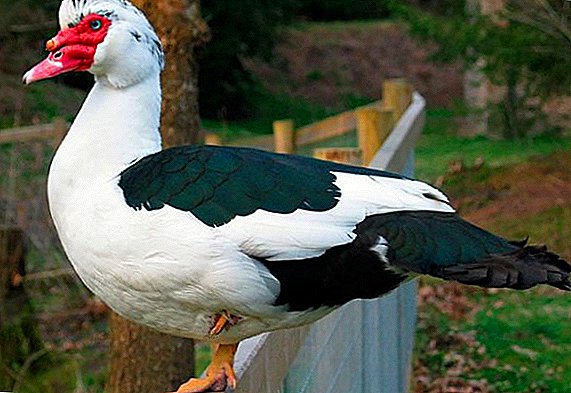 Poultry farmers often choose to grow musk duck, or an indoutkut, which is famous for its rapid weight gain and simplicity in care.
Poultry farmers often choose to grow musk duck, or an indoutkut, which is famous for its rapid weight gain and simplicity in care.
Today we will talk about the advantages of breeding these birds, the necessary conditions for their maintenance, as well as what preventive measures are important for their health.
Benefits of breeding Indo-stock
The main advantages of musk ducks before other breeds of agricultural birds are:
- Good vitality. The survival rate of ducklings is 95%, which is undoubtedly a high figure.
- Unpretentious content regardless of age and breed. An ordinary barn without drafts is suitable even for chicks.
- No need to specifically equip the reservoir - these birds are well adapted for swimming, even in a small water tank.
- Both chicks and adults are quiet. They never quack, mostly just hiss.
- Unpretentiousness in food - small and large indoutki are well adapted to any kind of food.
- Good egg production, which is about 100 eggs annually. Eggs have a large size - their weight is about 70 grams.
- High-quality easily digestible meat.

Indoor quick growth
Indo-ducks are distinguished by the color of feathers, the colors of the beak, legs and eyes.
Did you know? Indo-outs came to Europe from Central and North America, where they were domesticated by Indians.
Below are the most popular musk duck breeds:
- White It has a pale pink beak and yellow legs. Eyes are gray-blue.
- Black and white Black plumage with green and purple splashes goes on the back, and white - from head to chest. Beak is red with dark ending, legs are yellow with black spots. Eye color is brown.
- Wild brown. The color of feathers has a chocolate shade with white feathers in the main part of the wings. The beak is red, dark at the end. The legs and eyes are brown.
- Brown and white. White feathers cover the bird from head to breast, the rest of the feathers, legs and eyes are brown.
- Black The feathers are blue-black, with a greenish coating on the back and wings. The beak and legs are black.
- Blue Feathers of soft blue color with dark edging. Color beak and legs black and gray.
- Wild. It is characterized by a rich black color of feathers with greenish, purple and purple overflow. Legs are yellow, beak and eyes are brown.
- White with a pattern. The main color of feathers is white, has black markings on different parts of the body. Beak red-blue with black tip. Legs are yellow, sometimes there are black spots.
- Wild blue The plumage is bluish, with dark narrow stripes on the edges of feathers. The beak is red-blue with a dark tip. The legs are dark.
 The weight of musk ducks is 5-6 kilograms near the drakes and 2.5-3 kilograms near the ducks. Slaughter weight is achieved by indoutouts by the thirteenth week, and optimal for sale by the twentieth.
The weight of musk ducks is 5-6 kilograms near the drakes and 2.5-3 kilograms near the ducks. Slaughter weight is achieved by indoutouts by the thirteenth week, and optimal for sale by the twentieth.Conditions of detention
In order to develop well-developed and consistently gaining weight, you need to follow simple rules of care.
It will be useful for you to learn about the best breeds of indoutok, about the features of breeding indoutok at home, about the content of indoutok in the winter, as well as what egg production of indoutok at home.
Arrangement of the house
The hen house, which contains musk ducks, must protect individuals from adverse weather conditions and prevent the appearance of rodents there. Ideal if the building has a concrete base.
The density of birds should be 3 individuals per 1 square meter. The bird house is divided into zones of walking, rest and nesting. Nests create at the rate of 1 nest for 3 ducks. It is best to isolate this territory from all sides and make the entrance 10 centimeters above the bottom.
Important! Indeliutki fly well, so they need to cut the wings several times.
Places for walking and recreation
Feeding troughs and drinkers at the rate of not less than 5 centimeters per bird, as well as tanks with shell, chalk and ash are placed in the walking area. If possible, an aviary should be attached to the house, where Indoor will walk in the warm season.  In the recreation area are perches. Birds sleep well on a flat surface, so they put not the poles, but the tent. The main thing is that the birds do not have cramped, because they are not disposed to crowding.
In the recreation area are perches. Birds sleep well on a flat surface, so they put not the poles, but the tent. The main thing is that the birds do not have cramped, because they are not disposed to crowding.
It will also be useful for you to learn how to make and how to build a house for indoutok yourself.
Clean and disinfect the room
The room should be clean, bright and well ventilated. A litter that creates a special indoor climate is required in the house. You can make a mesh flooring over the recess for collecting litters indoutok. The litter should be changed regularly.
Disinfection of the house is of great importance for the prevention of various diseases. Periodically it is necessary to process the room with a 10% bleach solution. Feeders and nests are disinfected in a 3% creolin solution.
What should take care in the winter
Indo-outs tolerate cold temperatures well, but the room where they are kept should be at least + 10 ° C. At this time of the year, be sure to use insulated litter on the floor of the house: sawdust or straw is best. It is necessary to periodically check that the litter is not wet.
Important! Fir branches can be used for additional warming of the house walls in winter.
There should not be a musty smell in the duckbox, therefore even in winter the room needs to be periodically aired. Walls and roofs should be checked for cracks that will cause drafts. 
What to feed
Proper diet. Indo-chickens are important for both young chicks and adults.
Chicks
Ducklings start to eat food for 2-3 days from hatching. During this period, they still do not know how to eat on their own, so they need to serve food right into their beak. The adaptation period takes only a day, the next day they already consume the food themselves.
Ducklings aged from 3 to 14 days should be fed with chopped chicken or duck egg, gradually adding cottage cheese, cereal mixtures in broth or milk, nettle and dandelion.
Chicks older than two weeks add boiled potatoes to their diet. Topinambur is very useful and we love ducklings: it contributes to the rapid weight gain. Gradually, chicks are given food for grain: at first it should be boiled.
Find out also when they start laying eggs, why eggs don’t carry eggs, how the process of hatching eggs goes, and also if you can eat eggs.
Adult flock
In order for an adult herd to gain weight well, it is necessary to give them grain and wet food at least three times a day. From grain you can feed with rye, oats, millet, barley, legumes.  To the grain add finely chopped potatoes or carrots, greens will be useful in the diet. Indelique can also feed on waste potatoes and other vegetables.
To the grain add finely chopped potatoes or carrots, greens will be useful in the diet. Indelique can also feed on waste potatoes and other vegetables.
Important! If you notice that the independent plumes pluck out each other feathers, this may be due to an insufficient amount of nutrients in their body. This situation is easily corrected by adding greens and vitamins to the diet.
It is advisable to additionally give Musk ducks to eat chalk, shells, or crushed egg shells. To facilitate digestion, gravel or sand is placed in a separate feeder.
These birds are also distinguished by an independent search for food during walking: they eat grass, various worms and bugs. In order for the birds to get the necessary vitamins and nutrients to the full, the poultry farmers introduce mixed feed into their diets.
Disease prevention
Muscovy ducks are distinguished by high immunity, allowing them to withstand many diseases. However, for prevention it is important to maintain the required temperature of their content, to comply with the correct diet and to avoid dampness and dirt in the house.
Vaccination is not a necessary measure, but can only be applied after consulting a veterinarian.  In case of industrial breeding of indoutok, a necessary preventive measure will be their timely vaccination against viral hepatitis. In order to protect their livestock from this disease, it is necessary to use the Capevas vaccine: it is administered twice to the Indo woman, even when they are at the age of chicks, at 4 and 8 weeks.
In case of industrial breeding of indoutok, a necessary preventive measure will be their timely vaccination against viral hepatitis. In order to protect their livestock from this disease, it is necessary to use the Capevas vaccine: it is administered twice to the Indo woman, even when they are at the age of chicks, at 4 and 8 weeks.
Did you know? According to one of the versions, turkeys were the ancestors of the bastards, however this opinion is erroneous.
Indo-ducks are chosen for breeding by farmers who want to have good offspring and high-quality bird meat. Knowing all the intricacies of caring for the indout, you will be relieved of a lot of trouble and provided with tender meat with low fat content.


